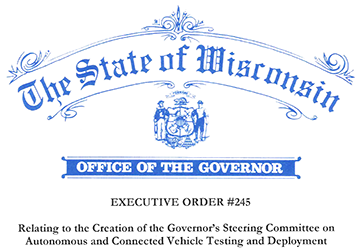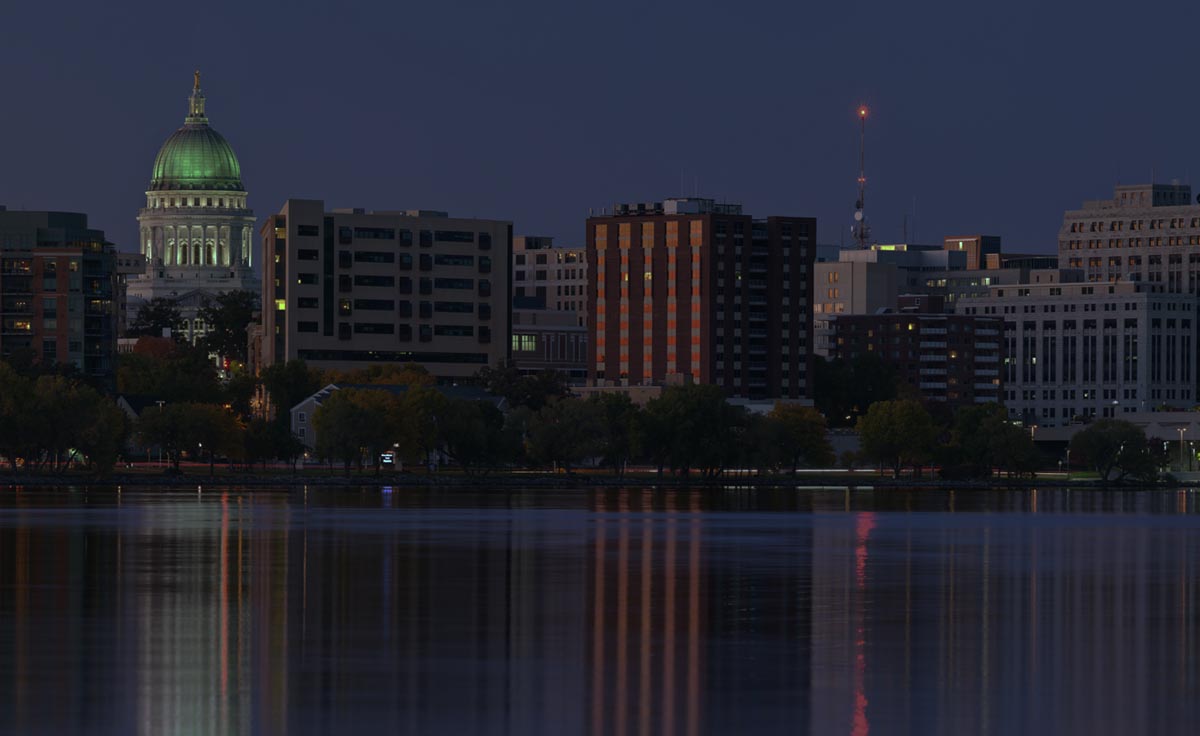How many government officials — national, state, regional, and city — does it take to modernize the infrastructure of the United States?
There’s no good punchline, and only one answer that fits: too many. And whether this large group of politicians can actually pull it off remains to be seen.
There are, unfortunately, roadblocks at both the state and federal level, and plenty of them. Each of them makes it a little bit harder for the Trump infrastructure proposal to come to fruition. Added together, they paint a bleak picture. So let’s take a look at this problem at both the federal and state levels.
FEDERAL
Last month, we looked at vehicle-to-infrastructure technologies and how important they are to the rollout of autonomous vehicles. In that piece, there was a choice quote from Adie Tomer of the Brookings Institute: “developing a single Infrastructure bill would require a Congressional Tower of Babel.”
It’s an interesting conceit. You may remember the story of the Tower of Babel, but here’s the gist: at that time, humans all spoke the same language, and because that enabled them to work together so effectively, they managed to build a tower that reached heaven. In the story, God saw it as an affront to his power: “if as one people speaking the same language they have begun to do this, then nothing they plan to do will be impossible to them.” So he created different languages to confuse everyone and doom the project.
The tale is meant to explain why there are different languages and cultures, and why we have national/cultural conflicts. But read today, in the context of developing a national infrastructure strategy, Tomer’s allusion is quite apt. Because for something as huge as modernizing the nation’s infrastructure, there is going to have to be unity – everyone speaking the same language. Especially since this isn’t just a matter of repairing old infrastructure. We’re seeking to create smart roads and other V2I infrastructure — they’re essential aspects of the AV and smart city future, and they’re not going to just build themselves.
And in that same Brookings piece, Tomer goes so far as to say “there’s no such thing as an infrastructure bill.” That’s surprising, given the amount of talk from the Trump administration about a $1 trillion infrastructure investment.
So why would a Brookings fellow say this? Not “infrastructure can’t pass,” but “there will never be a bill”? We need a “tower of Babel”? We know Congress can’t get along, but can’t they just put aside party politics for once? If only it were that simple!
You might expect that there’s a subcommittee somewhere in the US legislature that oversees America’s infrastructure. And you’d be correct. The problem is, there are several of them — in each chamber — all claiming some jurisdiction over US infrastructure. The result: trench warfare.
When browsing through a list of the standing Senate committees trying to determine who has jurisdiction over infrastructure, you might naturally stop at the Commerce, Science and Transportation committee. Seems like the natural place for it. And it is: the committee oversees “communications, highway safety … regulation of interstate common carriers, technology research and development of policy, standards and measurement, [and] transportation.”
But there are subcommittees within Commerce, Science and Transportation with overlapping interests, especially if our new infrastructure is going to be V2I-equipped, which it must be. There’s the Communications, Technology, Innovation and the Internet subcommittee, which has jurisdiction over wireless communications — an integral function of V2I tech.
Then there’s the Consumer Protection, Product Safety, Insurance and Data Security subcommittee, which oversees the National Highway Traffic Safety Administration “in creating safe and fuel efficient vehicles.”
And the Space, Science and Competitiveness subcommittee, which, among other things, oversees the National Institute of Standards and Technology (NIST) — and good standards are crucial for V2I interoperability.
Finally, there’s the Surface Transportation and Merchant Marine Infrastructure, Safety and Security subcommittee, which “has jurisdiction over interstate transportation policy issues,” and oversees DOT and the Office of Research and Technology, as well as independent transportation regulatory boards.
Obviously, all these subcommittees would have to work closely together, each representing jurisdiction over an element of V2I technology, in order to ensure the right language is in a hypothetical infrastructure bill. But at least they’re grouped under one larger committee. Subcommittees often disagree within the framework of the larger committee they’re serving — sometimes due to constituency and re-election issues, occasionally due to ideology — but ultimately, the committee at large takes their recommendations into consideration when deciding whether to move a bill to the floor or not.
So it should still be doable, right?
Maybe not. Because there are some other standing committees with jurisdiction over similar, and sometimes the same, aspects of infrastructure. And this is where the need for a “tower of Babel”, a shared language, becomes really apparent. Unless all these standing committees and subcommittees are coming at infrastructure with a uniform point of view, this is where the whole bill really risks falling apart.
Just a couple of examples: the Senate Banking, Housing and Urban Affairs committee enjoys jurisdiction over “urban mass transit systems and general urban development issues” — road infrastructure in cities would need their OK. There’s the Environment and Public Works committee, whose jurisdiction includes construction and maintenance of highways, and a subcommittee called Transportation and Infrastructure that oversees “transportation”, according to their website.
But wait, you may be saying… How can there be a Transportation and Infrastructure subcommittee that has jurisdiction over transportation, while you just read about the Commerce, Science and Transportation committee claiming the same jurisdiction? Well, that’s part of the problem. I’ll spare you further descriptions of committees and subcommittees that have similar jurisdiction, but believe it or not, there are four others (in each chamber!) that also claim some oversight over transportation and infrastructure. And if you begin to include things like data security and collection that will be necessary with V2I infrastructure, that number gets even bigger.
And let’s just say these committees all, through sheer luck, managed to agree on exactly what was needed for infrastructure in a sweeping reform and funding bill. They’d still have to get through Appropriations, which has the final say in allocating monies for the bill. And, wouldn’t you know it, there are Appropriations subcommittees that could wind up at loggerheads over money, too. There’s the Transportation and HUD subcommittee, which funds DOT as well as surface transportation projects, but there’s also the Energy and Water Development subcommittee, overseeing the US Army Corps of Engineers and others that build “civic works projects.”
Considering that Congress doesn’t have a great track record, especially recently, of being able to come to consensus on budgetary issues, it would appear Tomer is right. There are too many cooks spoiling the broth in Congress. And, remember, if the Congressional committees did all somehow hammer out an agreement on infrastructure and then there was agreement about how to fund it, and a majority of Senators passed the bill, the President would still have to sign it into law.
The question ultimately becomes: would a Congressional Tower of Babel even be enough if legislators managed to unify around this issue? It doesn’t take much for a bill to die in committee. The Congress must recognize the urgency of this issue and be brave, since not everybody is going to be able to impress their state constituents and please their fund-raisers in the short-term. A massive investment in infrastructure transcends those concerns – it’s the role of the federal government to make these big decisions for the good of the nation, and, dare we say it, to compromise with one another in doing so.
Take a deep breath — it gets tougher.
STATE
Recently, Reuters ran an investigative report about the astonishing delays infrastructure faces at the state level.
Part of the report focused on a saltwater-to-freshwater treatment plant that might be built in Huntington Beach, California. If you’ve been following the news over the past few years, you know that California is in desperate need of fresh water — it’s been enough for the governor to declare a state of emergency multiple times. The drought has threatened crops, started wildfires, and caused the citizenry to worry about whether their taps would even continue to flow if it went on. So this piece of infrastructure could reasonably be called an emergent need.
Here’s the problem: the project was proposed in the late 1990s, with permit requests sent to the requisite boards and commissions. By the early 2000s, the city of Huntington Beach had approved it, but the builder still needed 24 more permits from state agencies to build the facility. Some of these permits required other permits before the project could even be considered, so the timeline went like this:
- In 2007, the company finally got approved by the Santa Ana Regional Water Quality Control Board, which is federally mandated by the EPA to ensure that a piece of water infrastructure has an effective pollutant discharge elimination system. Following that approval, the company was able to apply for a permit from the California Coastal Commission.
- The CCC permit application required dozens of amendments — because as time went on with the permit pending, new laws and regulations took effect. The company had to completely redo its design, for example, when the state decided to phase out power plants that use seawater for cooling purposes.
- After several redesigns and permit amendments, the company had to temporarily shelve their application with the CCC in 2013, who directed them to look into concerns about the effects of the plant on fish larva in the area.
- Two years later, all fish larva concerns cleared, the permit was resubmitted in 2015 — but withdrawn again in late 2016, because the commission wanted proof that the plans complied with rules passed in 2015. This compelled the company to redesign their saltwater intake and discharge technologies.
- As of this writing, the company still doesn’t have approval from the CCC, along with two other agencies. The other 21 permits have been issued. The company’s optimistic prediction is that by the second quarter of 2018, construction can finally begin.
Again: designed by a company in the mid 90s, applied for in the late 90s. 20 years later, they’ll be able to begin construction, if they’re lucky. And this isn’t just some big industrial blight that one could argue deserves to be held up. It’s a piece of infrastructure that would directly address what the state’s governor has officially called an emergency.
That means it’s a cautionary tale. No matter the importance of a new piece of infrastructure, a single major project can be stalled for decades as it seeks all requisite permits. Many of these permit agencies do environmental impact studies that take a year or two apiece. If there wasn’t so much bureaucracy and agency-level politics, maybe a state could agree to do a single environmental impact study per proposal. This would drastically reduce the wait time while still ensuring infrastructure projects would be at least environment-neutral.
But, again, to do this, there would have to be broad agreement across state agencies with overlapping jurisdiction on infrastructure projects. Sound familiar? A single Congressional tower of Babel was already pitched by Adie Tomer as an impossibility – could we possibly manage to come up with an additional 50 of them?
WHAT TO DO?
This is not a rosy picture. An infrastructure bill is going to be very hard to pass federally, and then each individual piece of it will likely face roadblocks at the state level. But when it comes to looking for V2I technology to be put into place — a necessary aspect of rolling out AVs — there is some degree of hope here. Infrastructure is a national emergency. The short-term approach to upkeep of failing infrastructure is costing cities far more than it would cost to repair and/or build new infrastructure. There are water emergencies across cities and states not just limited to California. We got a reminder from Atlanta recently that there are road and bridge emergencies waiting to happen nationwide, too. So eventually something is going to have to be done in spite of all this gridlock. It’s a shame that infrastructure has decayed so badly that it truly is a national emergency, but if there’s a silver lining, at least it’s happening now as opposed to ten years ago.
Because now we have the science and technology to integrate V2I technology into the infrastructure that will have to be rebuilt. With that technology, we will be able to monitor the condition of infrastructure so we will know when it needs low-cost servicing that will prevent a high-cost emergency down the road. We will be able to roll out autonomous vehicles, which will save money for companies and city/state governments in such impressive fashion that eventually the infrastructure spending will be made up for and then some.
We just need elected officials at all levels of government to recognize this is an emergency — from an economic, social and security standpoint — and find a way to overcome all the various hurdles to get this done all at once. This is the nation that got behind the New Deal and, through sweeping efforts, pushed through a depression that could have ended the nation entirely. No Congressional tower of Babel was required, because the emergency was obvious. All it takes now, as it did then, is a government that’s courageous and responsible enough to take on the challenge and admit the severity of the crisis before it’s too late. And this time we have the added benefit of being able to use the opportunity to bring in innovations that will prevent the emergency from happening again.
So we hope the government’s response to the question — how many governmexnt officials does it take to repair infrastructure — is “all of them, bravely working together, putting the national interest ahead of personal agendas, speaking the same language.” That’s the real answer – it’s not a joke.
Rob Fischer is President of GTiMA and a senior advisor to Mandli Communications’ strategy team. GTiMA and Mandli Communications are both proud partners of the Wisconsin Autonomous Vehicle Proving Ground.
Follow Rob on Twitter (@Robfischeris) and Linkedin.
Heath Davis-Gardner is a professional writer and editor who currently serves as Strategic Communications Specialist at Mandli Communications.



